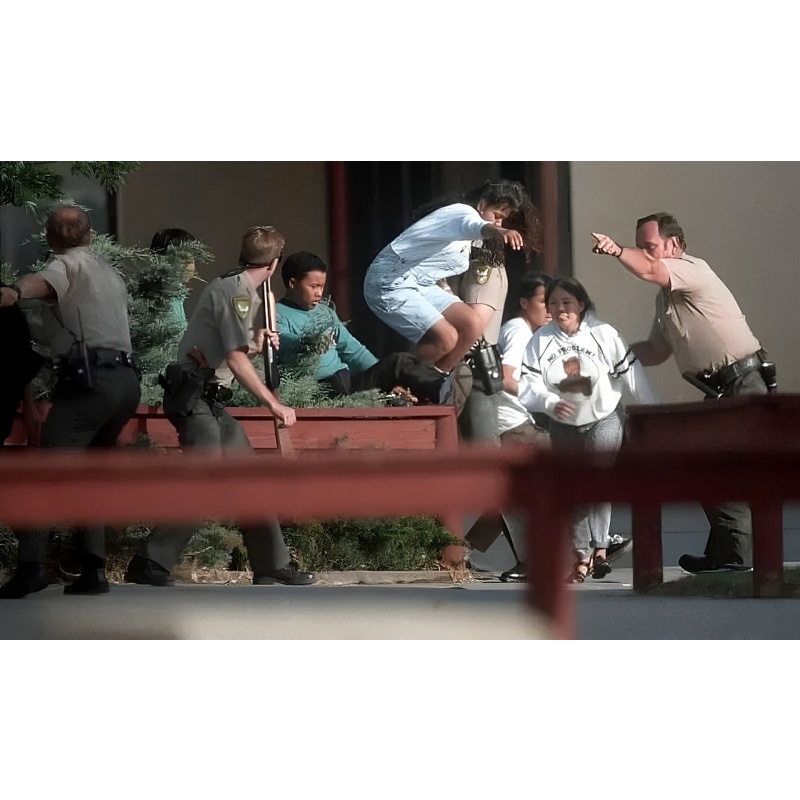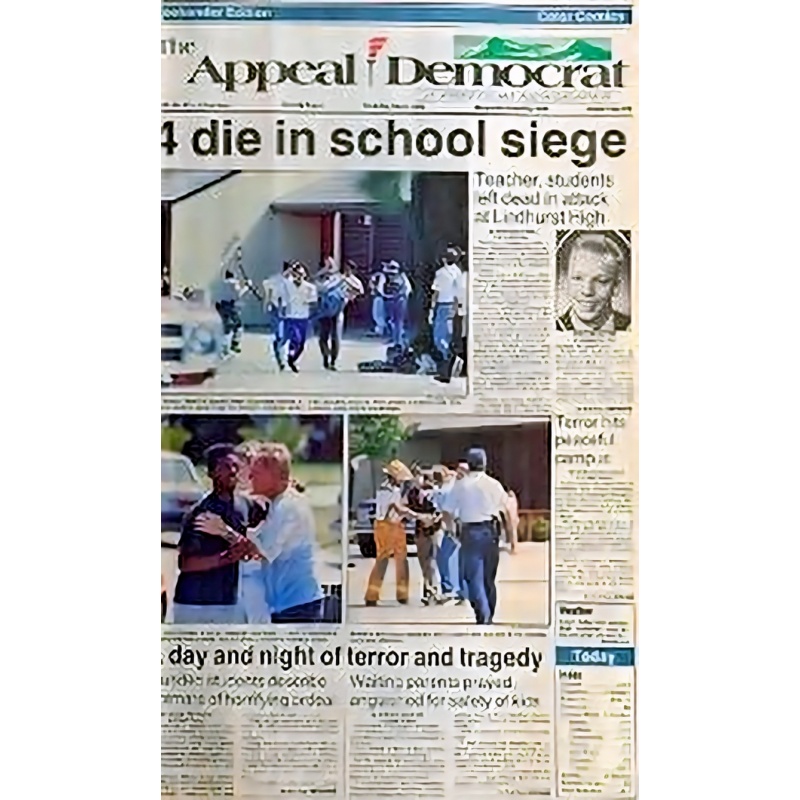ERIC CHRISTOPHER HOUSTON | Death Row | 1992 Lindhurst High School Shooting | Pioneer of School Shootings Fatally Shot 4 People and Injured 10 Others | Took 85 Students Hostage, 8-Hour Standoff | ALS
LongfellowSerenade 67
Eric Christopher Houston, the pioneer of school shootings, a former student, committed a shooting at Lindhurst High School on May 1, 1992, motivated by grievances against a teacher and other issues. Houston fatally shot four people: teacher Robert Brens and students Judy Davis, Jason Edward White, and Beamon Aton Hill, and injured ten others. Following the shooting, Houston took approximately 80 students hostage, leading to an eight-hour standoff before his surrender. Houston was convicted and sentenced to death in 1993, a sentence upheld by the California Supreme Court in 2012, and he remains incarcerated while filing appeals. The event led to a memorial and has been the subject of films and television episodes.
Brens had flunked him when he was a senior. He said that he couldn't go to the prom, for which he had rented a limousine; he had lost his job and his fiancé - all because he had failed high school. Defendant told the students that his fiance' had broken up with him - he passed her picture around the classroom.
$70.00
- Postage
-
Standard Shipping
$0.00 to United States
Get Additional Rates
- Select Country
- Zip/Post Code
- Quantity
Description
Eric C. Houston. Autographed Letter, Signed. Handwritten, Commercial #10 (4.125 × 9.5 envelope). Eureka, CA. May 27, 2025. Content unknown. SEALED.
On May 1, 1992, Eric Christopher Houston, a 20-year-old former student of Lindhurst High School in Olivehurst, California, carried out a mass shooting at his alma mater. Armed with a shotgun and a rifle, he killed three students and a teacher, wounded nine others, and held over 80 people hostage for several hours before surrendering to authorities. Houston was convicted of multiple counts of first-degree murder and attempted murder and was sentenced to death. His actions had a profound impact on the community and contributed to the ongoing national conversation about school safety and gun control.
Shadows in the Halls: The Eric Houston Tragedy
Eric Christopher Houston was born in 1971 in California. Details about his early life and family background are limited, but it is known that he attended Lindhurst High School in Olivehurst, California. After high school, Houston served in the U.S. Navy but was discharged under less than honorable conditions. He returned to Olivehurst, where he struggled to find stable employment and reportedly harbored resentment toward the school and certain staff members.
On May 1, 1992, Houston entered Lindhurst High School armed with a shotgun and a rifle. He targeted a classroom where he believed a teacher who had previously failed him would be. Upon finding a substitute teacher, Robert Brens, instead, Houston shot and killed him. He then proceeded to shoot and kill three students: Judy Davis, Beamon Hill, and Jason White. Nine other students and a teacher were wounded during the attack. Houston held over 80 students hostage for approximately eight hours before surrendering to law enforcement.
Houston was arrested at the scene by the Yuba County Sheriff's Department. He was charged with multiple counts of first-degree murder, attempted murder, and kidnapping. During his trial, which began in 1993, the prosecution presented evidence of premeditation and intent, while the defense argued that Houston suffered from mental illness. The jury found Houston guilty on all counts, and he was sentenced to death. His conviction and sentence were upheld on appeal.
The victims of the shooting were:
Robert Brens, a substitute teacher
Judy Davis, a student
Beamon Hill, a student
Jason White, a student
The attack had a devastating impact on the victims' families and the Olivehurst community. It also contributed to the national discourse on school safety and gun control, highlighting the need for improved mental health services and security measures in educational institutions.
As of now, Eric Houston remains on death row in California. There is no public information indicating any rehabilitation efforts or changes in his incarceration status. Given the severity of his crimes, he is considered a continued threat to society if ever released.
The Lindhurst High School shooting serves as a tragic reminder of the potential consequences of untreated mental illness and the importance of proactive measures to ensure the safety of students and staff in schools. It underscores the need for accessible mental health resources, effective communication between educational institutions and law enforcement, and comprehensive safety protocols.
Due to the notoriety of the case and the rarity of items associated with Eric Houston, any autographed materials or personal artifacts linked to him are considered highly valuable among collectors of true crime memorabilia.
VIDEO: 25 years later: Survivors remember deadly Lindhurst HS shooting | https://youtu.be/wEhiwKVe4Ug
Archiving Protocol:
• Handled with White Gloves ab initio
• Photo Pages/Sheet Protectors: Heavyweight Clear Sheet Protectors, Acid Free & Archival Safe, 8.5 × 11, Top Load
• White Backing Board—Acid Free
Shipping/Packaging: Rigid Mailer 9.5 × 12.5. The Kraft cardboard is white, self-seal, and stay-flat, ensuring it does not bend. Heavy cardboard, which has strong resistance to bending and tearing, makes each rigid mailer sturdy. These mailers are significantly thicker than those used by the USPS. Shipping cost is never more than it absolutely has to be to get it from me to you.
Payments & Returns
- Payment Methods
- PayPal, Money Order
Postage & Shipping
- Item Location
- 49858, Michigan, United States
- Ships To
- Worldwide
- Pick-ups
- No pick-ups
- Shipping Instructions
- Shipping costs to international destinations will be applied to this auction. Please contact us if you have any questions about shipping to your location.
- Returns Accepted
- No

-800x800.jpg)




-800x800.jpg)



-500x500.jpg)
-500x500.jpg)

